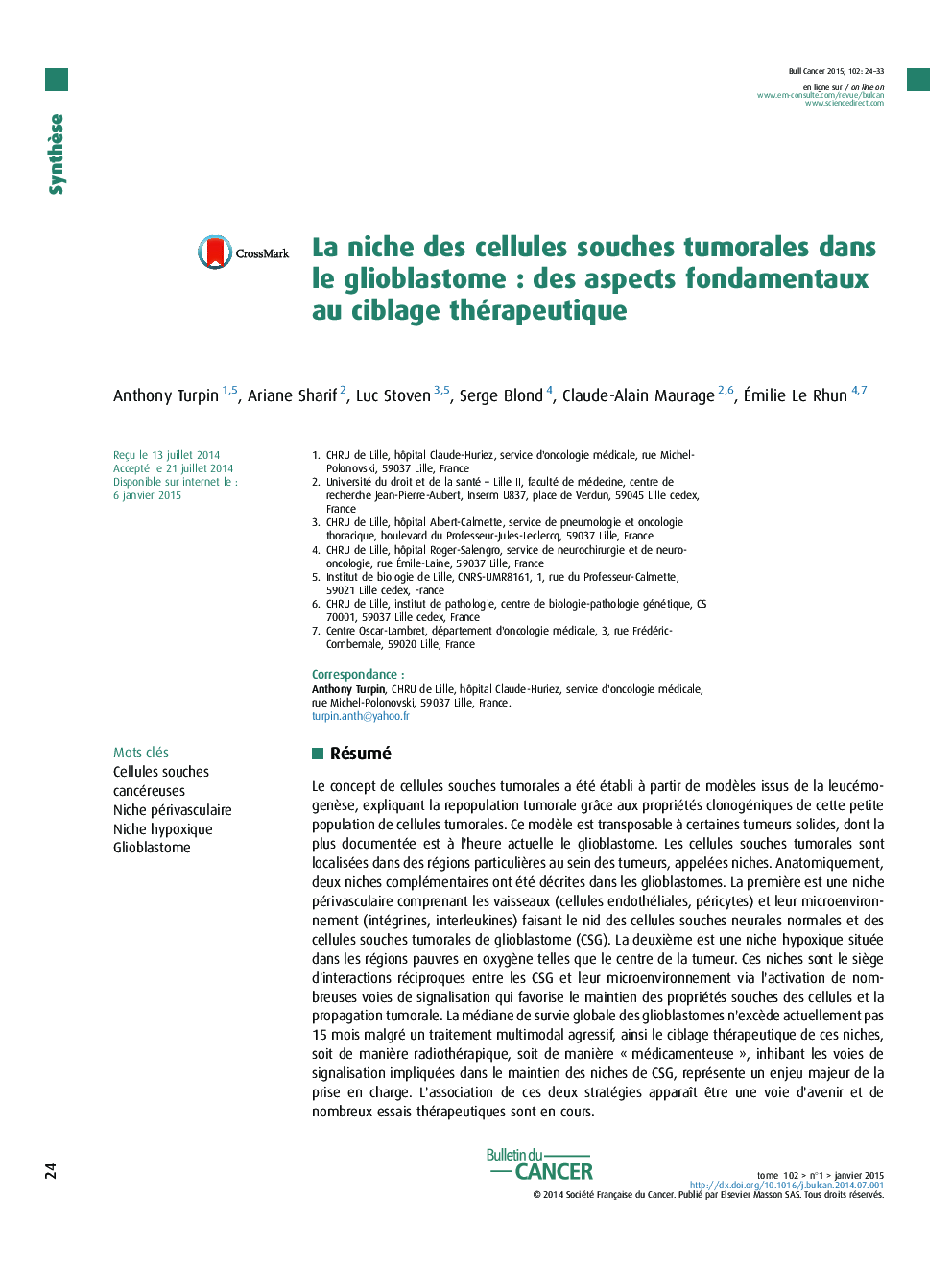| Article ID | Journal | Published Year | Pages | File Type |
|---|---|---|---|---|
| 3978541 | Bulletin du Cancer | 2015 | 10 Pages |
Abstract
The concept of cancer stem cell (CSC) was established from models of leukemogenesis explaining tumor repopulation by the clonogenic properties of this specific population of tumoral cells. Among solid tumors, glioblastoma are currently the most documented models. Cancer stem cells reside in specific locations within tumors called niches. Anatomically, two complementary niches have been described in glioblastoma. The first one is a perivascular niche composed of vessels (endothelial cells, pericytes) and their microenvironment (integrins, interleukins) constitutive the nest of “normal” neural stem cells and cancer stem cells. The second one is a hypoxic niche found in regions with low oxygen tension such as the core of the tumor. In these niches, mutual interactions between CSC and their microenvironment involving the activation of multiple signaling pathways promote stemness maintenance and tumor propagation. The median overall survival of glioblastoma does not exceed 15Â months despite an aggressive multimodal treatment, thus the therapeutic targeting of these niches, by systemic agents or radiotherapy, in order to inhibit the signaling pathways involved in the maintenance of the CSC niches, represents a major challenge. The combination of these two strategies appears promising and many clinical trials are underway.
Related Topics
Health Sciences
Medicine and Dentistry
Oncology
Authors
Anthony Turpin, Ariane Sharif, Luc Stoven, Serge Blond, Claude-Alain Maurage, Ãmilie Le Rhun,
